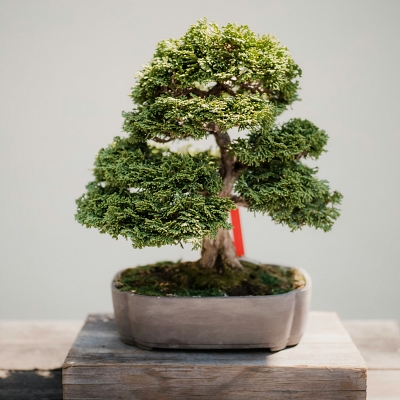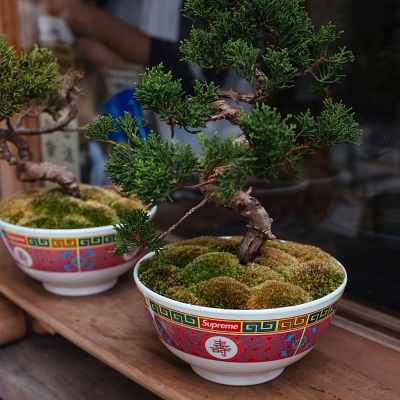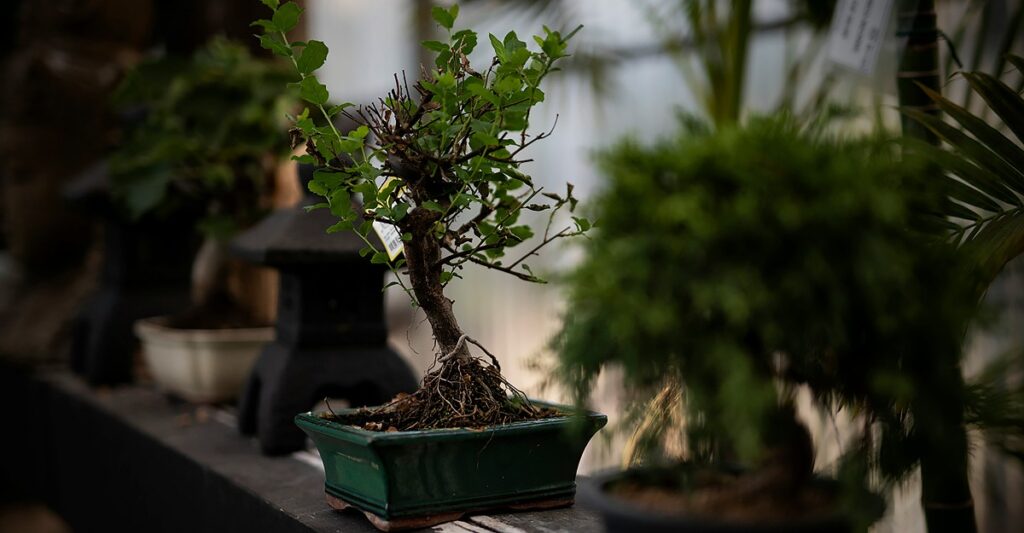Creating and caring for bonsai is an art that combines patience, observation and dedication. This complete guide will cover all aspects of a course that will teach you from scratch how to create and care for a bonsai, exploring both the initial techniques and the daily care that ensures the health and beauty of the plant over the years.
With the help of the course to create and care for bonsai from BotanicApp, an application available for Android, the process of caring for and monitoring bonsai can be made easier, providing valuable guidance for beginners and advanced practitioners. This app offers practical support, identifying the specific needs of each plant and helping to cultivate bonsai with precision and confidence.
Related searches:
What is a bonsai and how to choose the ideal species?
Bonsai is a miniature representation of a tree, cultivated using specific techniques that respect the natural growth of plants on a reduced scale. Originating in China and popularized in Japan, this ancient art reflects patience and skill, bringing nature indoors. Creating bonsai requires both botanical knowledge and an aesthetic vision to guide growth.
For beginners, choosing the right species is a fundamental step. Species such as fig, serissa and juniper are recommended for beginners, as they respond well to indoor environments and are relatively easy to care for. Temperate climate trees, such as the Japanese maple, also adapt, but require more rigorous control of the environment. Each plant has its own needs for light, water and nutrients, so it is important to study them.
Using a tool like BotanicApp makes this choice easier, allowing you to identify the ideal species for your environment. The app helps you choose and care for your bonsai tree on an ongoing basis, providing valuable information about ideal growing conditions. This way, even beginners can safely and easily choose and care for their first bonsai.
Preparing the soil and the right pot for your bonsai
Soil is the foundation of any bonsai tree’s health, and it needs to have a specific mix of nutrients and good drainage. Unlike other plants, bonsai trees need soil that drains quickly to prevent waterlogging and root problems. A good soil composition includes a mix of coarse sand, loam, and organic substrates that retain moisture.
In addition to the soil, the pot also plays a fundamental role in the development of the bonsai. Ceramic pots are generally preferred, as they retain moisture and allow good ventilation, but they should have holes to prevent excessive water retention. The size of the pot should also be appropriate for the size of the tree, allowing for controlled root growth and ensuring stability for the plant.
BotanicApp can help recommend specific soils and pots for each type of bonsai. Through the app, it is possible to monitor the evolution of the soil and pot as the plant grows, helping the user to make informed decisions about repotting and necessary adjustments so that the bonsai remains healthy and beautiful.
How can the course help you with watering and fertilizing your bonsai?
The balance between water and nutrients is essential for the health of bonsai. Unlike other plants, bonsai need careful control of humidity, as too little or too much water can harm their development. Watering is a daily practice, especially during the warmer months, and the amount of water varies according to the species and the climate.
Just like watering, periodic fertilization is essential to compensate for the lack of nutrients caused by the reduced volume of soil in the pot. Bonsai need regular nutrition with fertilizers rich in nitrogen, phosphorus and potassium, but it is important to dose them correctly so as not to harm the plant. The ideal is to fertilize the bonsai during spring and summer, respecting the growth cycle of the species.
In this way, BotanicApp offers a useful feature for scheduling watering and fertilization, notifying the user and helping to keep a history of care. This helps to ensure that the bonsai receives exactly what it needs, making the routine easier and avoiding common mistakes, such as overwatering or lack of nutrients.

What can help you prune your bonsai?
Pruning is a fundamental process in bonsai cultivation, as it defines the shape and limits the growth of the plant, maintaining the desired proportion. There are two types of pruning: maintenance pruning, which controls the size of the branches and leaves, and structural pruning, which defines the general shape of the tree. Pruning is done gradually, allowing the bonsai to develop a harmonious and balanced appearance.
Along the same lines as pruning, wire shaping is a technique used to guide branches, creating a characteristic look. Wires are wrapped around the branches, allowing them to be slowly directed until they assume the desired position. It is a technique that requires patience, as shaping can take weeks or months, depending on the growth of the bonsai.
Through BotanicApp, users can receive guidance on the ideal time to prune and tips on the correct wiring technique. This way, users learn to respect the bonsai's natural cycle, avoiding excessive pruning or shaping that could harm the plant's health. This support makes the process safer and simpler for beginners.
Protection against pests and diseases in bonsai
Bonsais, like any plant, are subject to pests and diseases that can compromise their health. Insects such as aphids, spider mites and scale insects are some of the most common invaders, and it is important to identify them early to prevent further damage. Constant visual monitoring is necessary to detect signs such as leaf spots and webs, which indicate the presence of pests.
To avoid problems, you can use natural control methods, such as biological insecticides and homemade solutions that repel pests without damaging the plant. In addition, keeping the bonsai in a ventilated place with good lighting helps prevent infestations. Regularly cleaning the environment around the bonsai also helps protect it from fungi and bacteria.
BotanicApp offers a useful tool for quickly identifying pests and diseases, suggesting methods of control and recommended products. This functionality facilitates pest management, making bonsai care more practical and increasing the chances of effective treatment.

Frequently Asked Questions About Caring for a Bonsai
1. What is the ideal frequency to water a bonsai?
Watering your bonsai depends on factors such as the species, climate and soil type. In general, it should be watered when the soil begins to dry out on the surface. To ensure that your bonsai’s needs are met, apps like BotanicApp can remind you and track your watering routine.
2. Is it possible to grow bonsai indoors?
Yes, but choosing the right species is essential for the bonsai to adapt well to indoor environments. Species such as figs and ficus adapt better to this environment, while plants that need more light can benefit from adequate artificial lighting.
3. What type of soil is recommended for bonsai?
Bonsai soil needs to be light and well-draining to prevent water from accumulating around the roots. A mixture of sand, clay and organic substrate is generally recommended. Using tools like BotanicApp helps you monitor moisture levels and alert you to any adjustments that may be needed.
4. What are the care measures for bonsai in winter?
During the winter, bonsai need special care, as watering and exposure to cold must be controlled. Some species go dormant and require a cooler environment, but away from frost. Protecting the roots and controlling humidity is essential.
5. How do you know when to prune your bonsai?
Pruning is usually done in the spring and fall, when the bonsai is growing. Regular pruning helps maintain the desired shape, and apps like BotanicApp can send alerts about ideal times, with guidance on how to perform the pruning safely.
What did you think of learning about growing bonsai?
Creating and caring for bonsai is a rewarding experience that promotes connection with nature and tranquility. With the tips covered and the help of apps like BotanicApp, cultivation and care can be simpler and more operational, ensuring the health of the plant and facilitating its maintenance.
By following these guidelines, you will be able to develop the skills to grow bonsai with confidence. This practice not only beautifies the environment, but also provides moments of learning and relaxation, enriching your daily life and learning how to grow and care for bonsai.

